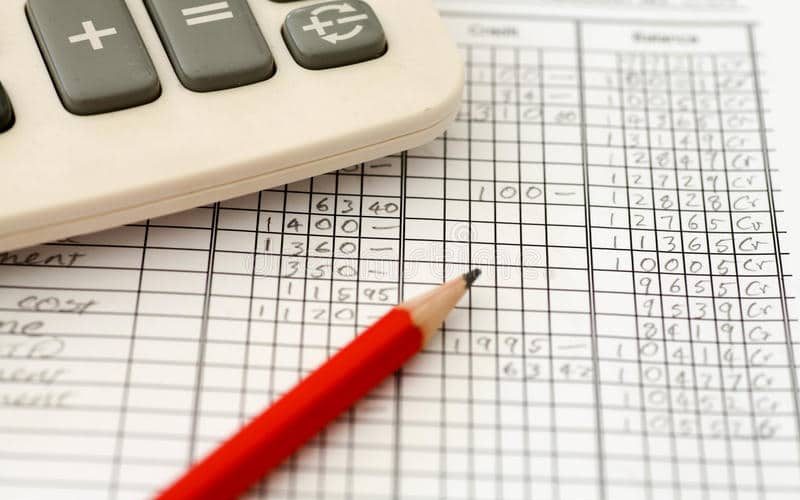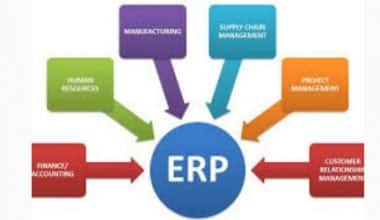An accounting ledger is a document that gives the central office the opportunity to collect all other account data from sub-ledgers in order to produce a report of the financial state of a business. Meanwhile, we will dive into the details of what this ledger and the general ledger mean and where you can get the best accounting books and the best template for your business.
Accounting Ledger
First and foremost, a ledger is a book of accounts in which transactions are typically recorded. Every ledger account possesses an opening balance and will record each transaction as either credit or debit in separate columns. The accounting ledger is also called the general ledger. Furthermore, the ledger provides a central avenue to collect all account data from various sub-ledgers thereby being the backbone of any corporate financial body.
This ledger is a record, that businesses use to safely keep bookkeeping entries for balance sheet and income statement transactions. However, the ledger journal entries can account for items including cash, accounts receivable, investments, inventory, accounts payable, accrued expenses, and customer deposits.
Meanwhile, the purpose or use of this ledger is to generate the 3 major financial key statements, which include; the income statement, cash flow statement, and balance sheet. This is typically where we talk about “posting,” which is an accounting ledger process of bookkeeping that involves recording credits and debits. Furthermore, this means that you can think of the ledger as a collection of the chart of accounts, where all accounting journal entries meet.
What is an Accounting Ledger?
This ledger, also called the general ledger accounts, consists of all the transactions and data your business needs to produce the income statement, balance sheet, and any other financial reports.
A general or accounting ledger transaction is the summary of transactions that a business owner makes as journal entries to sub-ledger accounts. Although the trial balance checks the accounting ledger by listing every detail of this ledger’s account and its balance, this typically makes adjustments and also, makes it easier to check and correct errors.
meaning of a general ledger as the foundation of a system? This means that accountants use this method to store and organize financial data, which they use to create the company’s financial statements. Note that transactions of a business are first posted to separate sub-ledger accounts, which the company’s chart of accounts possesses.
Understanding What an Accounting Ledger Means
After the transactions are posted on a separate ledger, this ledger then summarizes the account and, as well, generates a trial balance. This serves as a report for each ledger account’s balance while the trial balance is checked for mistakes by adding additional necessary entries. Then, the trial balance that you have checked and the adjusted trial balance will be used to generate the financial statements.
It is an account that is also used by businesses that use the double-entry bookkeeping method. This typically means that any financial transaction affects at least two sub-ledger accounts. An entry contains at least one debit and one credit transaction.
The double-entry transactions are known as “journal entries”. These entries are entered into two columns, with debit on the left and credit on the right. The total of these debit and credit entries should always balance to ensure a correct account. This typically makes this ledger the basis of a business double-entry accounting system.
General Accounting Ledger
General accounting ledgers (GLs) are known as account numbers and are mostly used to categorize the types of financial transactions. Also, the most commonly used general accounting ledgers are revenues, expenses, and transfers. Traditionally, accountants used to record financial transactions in the general ledger with their hands, using the double-entry accounting method.
In recent times, with the advent of computers, recording transactions has become easier. Accountants don’t have to record general ledgers in books anymore. They began using Excel sheets and modern accounting software.
Although the former way of recording these transactions has evolved, the significance of the general ledger account remains the same. making it an important accounting record for creating financial reports, which are the backbone for evaluating business health.
However, the general ledger is called a lot of things aside from the general accounting ledger. One of its other names is the accounting ledger. Henceforth, it’s best to identify the general accounting ledger by its meaning. So, it is a master accounting document that provides a complete record of all the financial transactions of your business. It is also an account that helps you look at the bigger picture and check accounts such as assets (fixed and current), liabilities, revenues, expenses, gains, and losses.
Accounting Ledger Books
Basically, a ledger is simply a book that contains the accounts of the financial statement relating to the financial position of a company. Therefore, the ledger is the principal book of a business because of its importance—also, the ledger book of the final entry contains all the financial information of a company.
The accounting ledger books are journals where the business maintains the data of all the transactions and financial statements. Meanwhile, the business account ledger book account is organized under the general ledger, with the balance sheet classifying multiple accounts like assets. as well as accounts receivable, accounts payable, stockholders, liabilities, equities, revenues, taxes, expenses, profit, loss, funds, loans, bonds, stocks, salaries, wages, etc.
Also, an accounting ledger book usually contains many things, including dates, particulars, amounts, etc. Furthermore, ledger accounts also include ledger posting. These three types of accounting ledgers are what we will discuss here below, and they include;
1. Sales Ledger Books
The sales ledger is a book where the company maintains the transactions of selling the products, services, or cost of goods to clients. This ledger gives the details of sales revenue and an income statement.
2. Purchase Ledger Books
A purchase ledger is a book in which the company organizes the transaction of purchasing services, products, or goods from other businesses. Also, it gives a general insight into how much amount the company paid other companies.
3. General Ledger Books
This ledger is of two types, namely the– Nominal and Private ledgers. The nominal ledger gives details on how to handle expenses, income, depreciation, insurance, etc, in the business. While the private ledger gives information on personal matters like salaries, wages, capital, etc. This type of ledger is not accessible to everyone.
Accounting Ledger Examples
Some of the examples of information contained in an accounting ledger include;
- Assets
- Cash
- Land
- Accounts receivable
- Equipment
- Liabilities
- Debt
- Accounts Payable
- Loans
- Accrued expenses
- Stock
- Stockholders Equity
- Common Stocks
- Retained Earnings
- Operative Revenues
- Sales
- Services Fees
- Operating Expenses
- Salaries and wages
- Office Expenses
- Depreciation Expenses
Some of the books you can read to learn more about what an accounting ledger means include;
- Master Bookkeeping: A Complete Guide to the Principles and Practice of Business Accounting. This is a book grounded in the principles of accounting and bookkeeping for your business.
- Accounting for non-accountants, 3E: The fast and easy way to learn the basics. You don’t necessarily need to have a degree in accounting in order to run a business. This book gives an insight, especially for beginners, into the right accounting steps to take for their business.
- Accounting made simple: Accounting explained in 100 pages or less: A short description of accounting and all the necessary details you need to know to get started.
- Financial accounting and accounting standards. This book contains the accounting information you need to start your business as well as set the right accounting standards for your business.
Accounting Ledger Template
I brought the best free accounting ledger template for accountants, CEOs, accounts payable and receivable teams, and other bookkeeping personnel to your fingertips. The advantages of a template and typically an accounting ledger one, include the following:
- Easy and understandable
- Saves time and energy
- Financially accurate and organized
- Safe bookkeeping of the business transactions
- Simple to use
Secondly, a template is a modern and simplified way of solving financial accounting and ledger problems. It’s easier now to focus on the stress of your business and later fill in the transactions in the columns already available. Depending on the financial accounting problem you need to solve, there is a suitable template for you. However, for the solutions of accounting ledger templates, most of them are Free general ledger templates.
What is a ledger and examples?
An account or record used to maintain bookkeeping entries for balance-sheet and income-statement transactions is known as a ledger. Cash, investments, accounts receivable, inventory, accounts payable, and more are just a few of the entries for the accounting ledger.
Is Ledger a debit or credit?
Assets are equal to liabilities plus shareholders’ equity on a balance sheet or ledger. A credit to the account results from a fall in asset value and a debit from a rise in asset value.
What is ledger also called?
Ledgers are frequently referred to as supplementary entry books. Every journal entry is posted to the appropriate ledger account.
Why ledger is called?
All entries from the books of original entry must be posted to the various accounts in the ledger, which is why it is referred to as the “king of all books of accounts.” It should be emphasized that a ledger contains a classified record of all transactions, whereas a journal provides a chronological record of all transactions.
What entry is ledger called?
Because a ledger is posted from the journal and the balances of these accounts are used to generate the financial statements for the company, it is also known as the book of secondary entry or final entry.
Conclusion
Undoubtedly, business owners cannot deny that they need the knowledge of this ledger and the general ledger for time-to-time checking of the financial growth of their business. However, in a digital world, you don’t typically need to manually go through the accounting ledger because there are books and available templates online to aid you in understanding what this ledger is all about.
FAQs
What is in an accounting ledger?
An accounting ledger is an account or record used to store bookkeeping entries for balance-sheet and income-statement transactions. Accounting ledger journal entries can include accounts like cash, accounts receivable, investments, inventory, accounts payable, accrued expenses, and customer deposits.
What are the three types of ledger?
The three types of ledgers are the general, debtors, and creditors.
What are the 5 ledger accounts?
These five categories are assets, liabilities, owner’s equity, revenue, and expenses.
These terms also refer to the three types of accounts in which a business records its transactions.
- Asset Accounts
- Liability Accounts
- Equity Accounts
- Revenue Accounts
- Expense Accounts
How do you use an accounting ledger?
When creating a general ledger, divide each account (e.g., asset account) into two columns. The left column should contain your debits while the right side contains your credits. Put your assets and expenses on the left side of the ledger. Your liabilities, equity, and revenue go on the right side.
Related Articles
- General Ledger Accounting: All You Need To Know(+Quick Tools)
- ACCOUNTING PROCESS: Understanding the 8 Steps in the Accounting Cycle
- CRYPTOCURRENCY: ETHEREUM VS. BITCOIN(Opens in a new browser tab)
- Small Business Accounting UK: Best 2023 Practices & All You Need
- ACCOUNTING CYCLE: What is Accounting Cycle & All you Need







1 comment
Is there any type of ledger system broadly used for company payroll? I’m enjoying the payroll tools my small business uses, but I’d love something to give me that extra level of organization. No worries if you can’t think of anything – just curious!